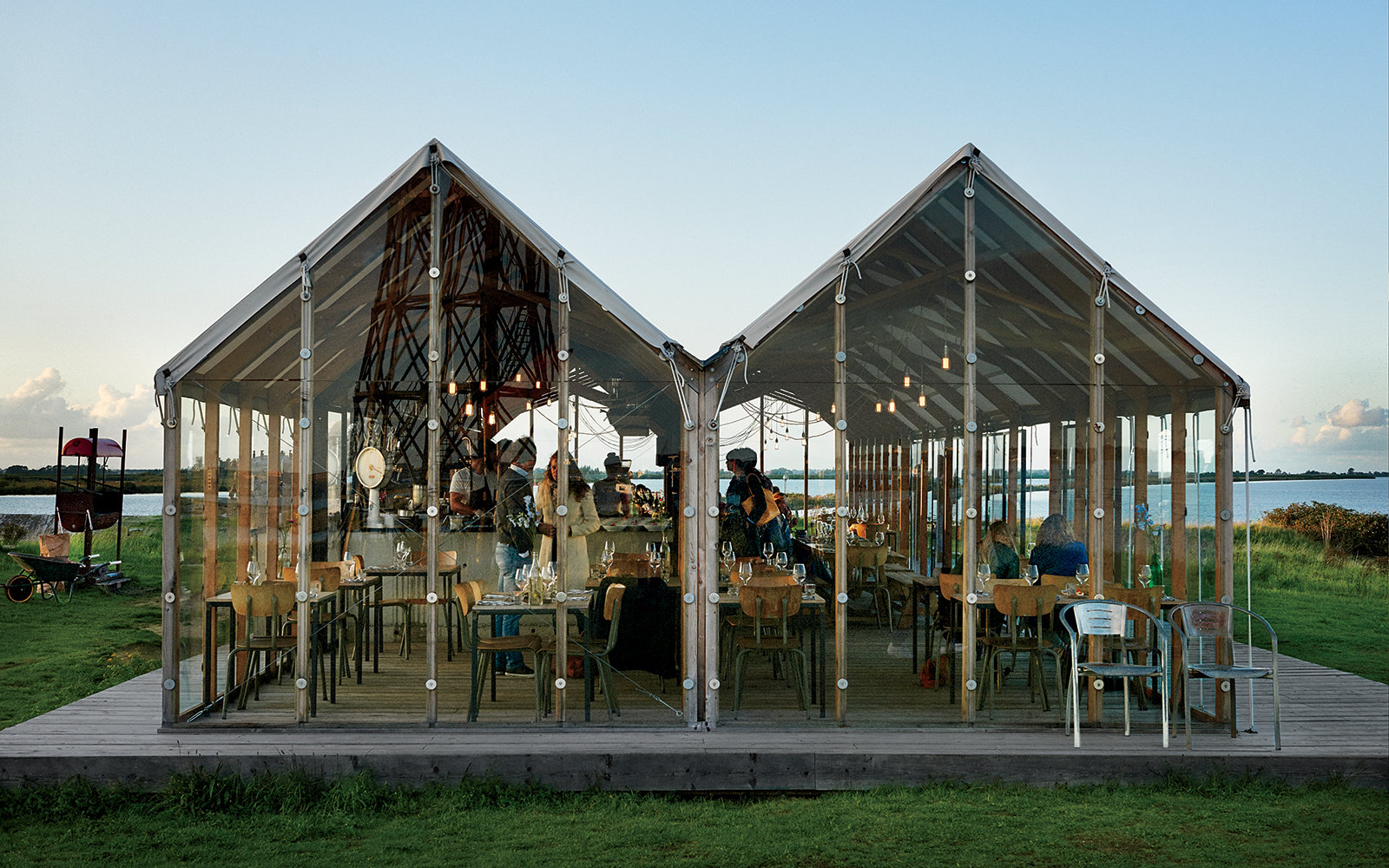
Once considered industrial no-man’s-lands, Amsterdam’s outskirts to the north and east have begun to hum with creative energy and shift the center of the city itself.
I was standing on the tenth floor of the former Royal Dutch Shell but was abandoned in 2009 after the financial crisis—into a cultural attraction for the whole city: a 24-hour music-themed hub with an affordable bou- tique hotel, a rotating restaurant, offices, and a subterranean nightclub. By the spring of next year, it will be rechristened as the A'dam Tower.
Amsterdam-Noord—roughly a third the size of Amsterdam, and just 300 yards and a five-minute ferry ride from the central train station—was once, somewhat unbelievably, not really considered part of the city. Originally home to docklands and industrial sites, the area began to suffer after the shipping industry gradually deserted the neigh- borhood in the mid eighties, leaving it to rot and rust, like the set of a dystopian thriller. A decade ago, its gritty landscape and raw architecture resembled today's central Detroit.
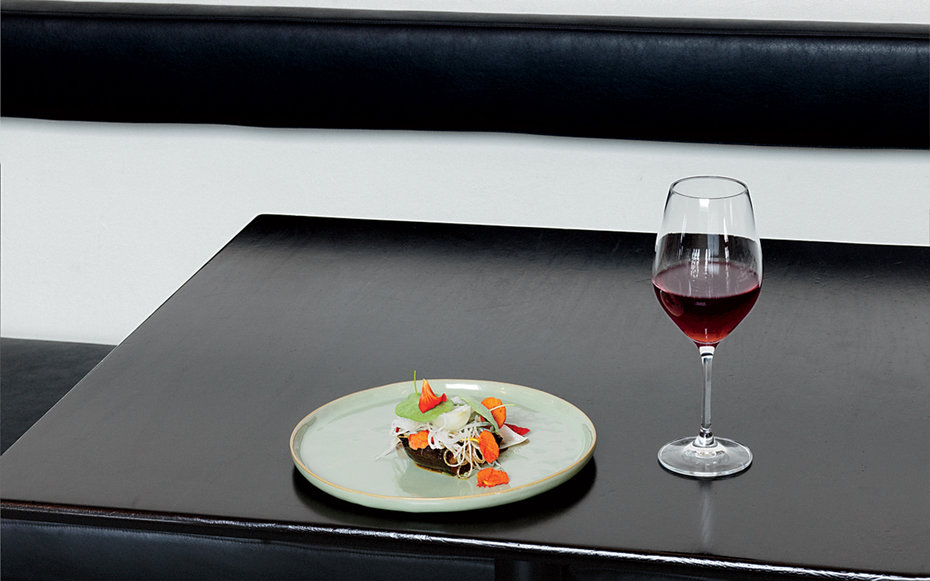
What makes the appeal of Noord different from the outskirts of other cities is the relative-ly small size of Amsterdam itself. Its historic center—the 17th-century canal ring, a unesco World Heritage site—is about half the size of New York's Central Park. That means its fringes, and the quirky experimental restau- rants and projects happening within these districts, are far more accessible for travelers, even those based in the city center, especially if you get around by bicycle, as all the locals do.
Which explains why I was facing south on a hard-hat tour with Groet. For visionar-ies like him, Amsterdam proper—with its coffee shops, tulip stalls, and legendary red-light district—has become too crowded, overrun by tourists and the wealthy. And just like New York's SoHo or the Marais in Paris, the city's main thoroughfares more closely resemble luxury shopping malls than unique neighborhoods. In the past few years, major streets have become so packed that, in the high season, they are impossible to penetrate. The line for the Anne Frank House often wraps around two or sometimes three blocks. Against the picturesque backdrop of Prinsengracht, with houseboats bobbing in the water, there is a palpable sense of bike rage.
Many of Amsterdam's tastemakers have made a new life for themselves working on the city's edges, moving not only to Noord—though that's by far the most notable shift—but to Oost (the East), too. Pushed out from the center, these new hotels, studios, shops, restaurants, and cafés have helped the city maintain a sense of individuality that was becoming harder and harder to see. Brimming with eccentric creativity and artistic spirit, they also offer an optimistic glimpse of the city's future.
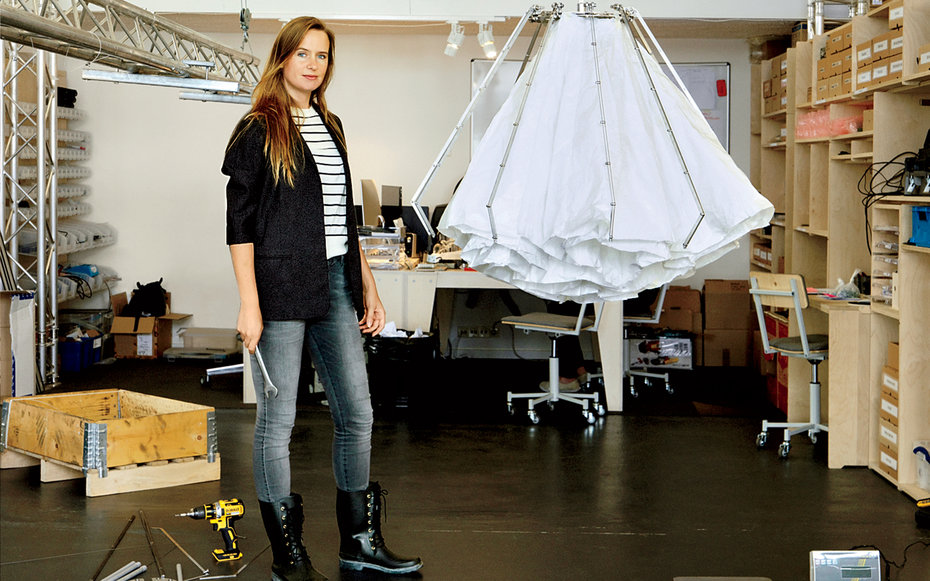
Before there was A'Dam, there was eye, a jaw-dropping feat of design by Austrian architectural firm Delugan Meissl. The building, a white, UFO-like structure on the river's edge, appears to hover over the water as if it has just descended from outer space. The Eye Film Institute's presence in Amsterdam-Noord was a major tipping point for the neighborhood—the museum chose to relocate from its original headquarters in Vondelpark, opening this new space in 2012. It was a smart move. Imagine if the Whitney had chosen to build its new Renzo Piano–designed museum in Red Hook, Brooklyn instead of downtown Manhattan. Almost all day, every day, Eye's café is packed with both locals and visitors who have come to enjoy the views from what has now been dubbed Nieuw Amsterdam.
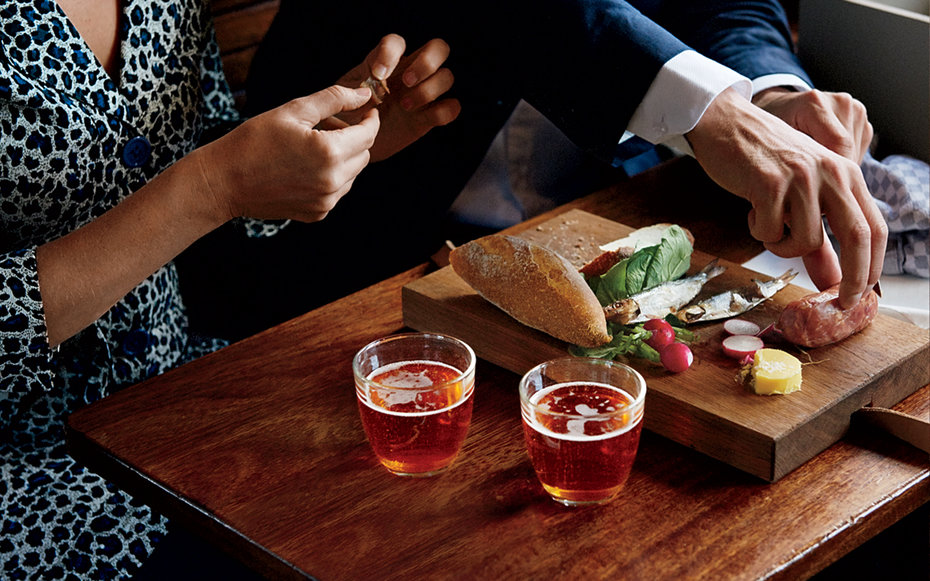
Among the other pioneers is the restaurateur Niels Wouters. One Tuesday evening, I followed him into the dining room of his nearly 10-year-old restaurant, Hotel de Goudfazant. It was buzzing with a lively crowd. When he first opened it, in an old hangar about a quarter the size of a football field on the waterfront, he told me, he had no idea how fast Amsterdam-Noord would develop. He just loved the big space, and the rent was next to nothing—plus, he relished the chal- lenge of being off the grid. Almost everything inside the building was repurposed: piles of old bricks were made into a low partition in the open kitchen and a yellow vinyl floor was ripped out, sawed into tiles, and used to create a mosaic on one of the walls. The dramatic centerpiece in the space, a massive Carlo Scarpa glass chandelier, was the only object of market value, and even that was borrowed from a friend, a gallery owner who couldn'tfind a room big enough to hang it in. "We had no money but we find it good fun to do things really, really cheap," Wouters said. "Even if we had money we'd still do everything ourselves."
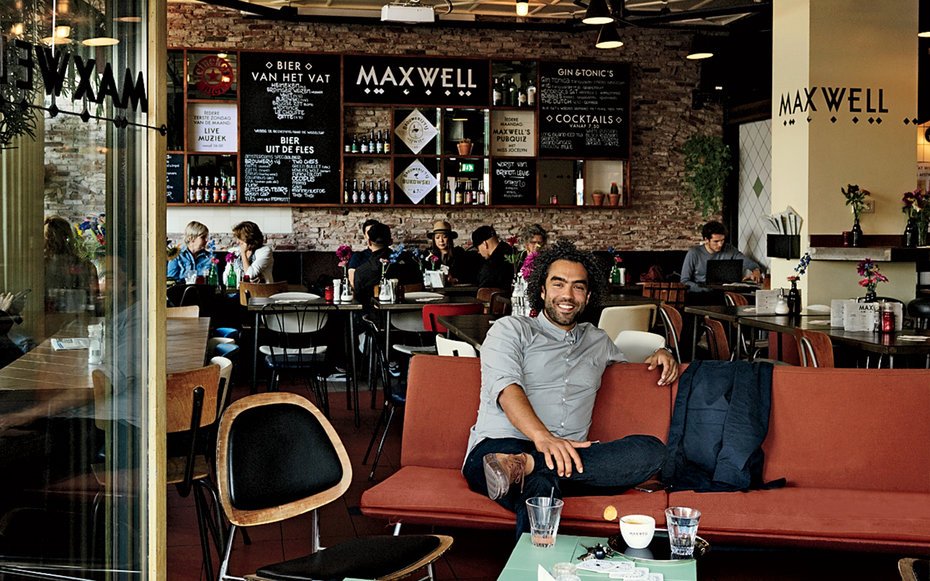
In 2012, Wouters opened another restaurant, smaller but more ambitious, called Café Modern. The menu is a Dutch spin on French bistro fare, offering unfussy dishes like oysters with cucumber and cockles with croutons. The restaurant is set in an old bank building with a mirrored back wall, recycled industrial lights, and an open kitchen. It's just a five-minute bike ride from Eye and around the corner from Van der Pekstraat, a small avenue lined with shops and three-story brick housing projects, currently being gentrified with indie bookstores and boutiques. "It's changing now," said Wouters, "but it's happening slowly and organically. Of course, I'm part of that change, but I hope it remains a mixed neighborhood."
Bicycle beyond the waterfront and Amsterdam-Noord gets weirder and harder to navigate. Go left or right off Van der Pekstraat and you'll pass former harbor cap- tain's houses, parks, canal locks, shiny new office buildings, and shoddy little ware- houses and garages. Many artists and designers have taken advantage of the affordable rent, colonizing these industrial buildings— though it can be difficult to tell what's an old storage building and what's a studio.
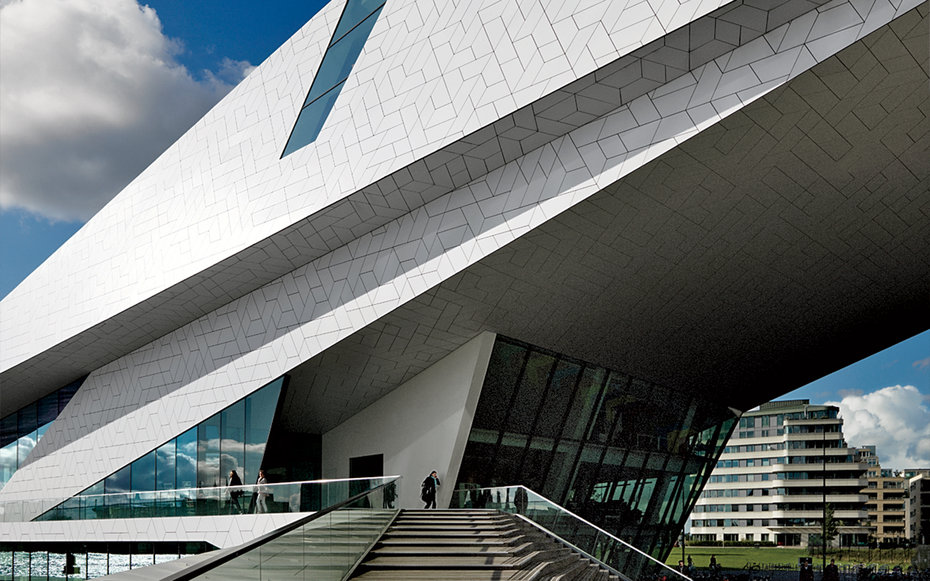
One day, I followed Lilian Tilmans, the happy-go-lucky 57-year-old founder of Amsterdam Personalized, who occasionally leads custom tours of the city that fo- cus on Amsterdam's young designers and innovators. She took me to meet Ralph Nauta of the design duo Studio Drift. A tall and handsome 37-year-old with a head of dark, unruly hair, Nauta explained that he and his partner, Lonneke Gordijn, aspire to create objects that combine their passion for nature with futuristic technology. "I am obsessed with Star Trek and science fiction," said Nauta, "and Lonneke is more organic and interest- ed in pure nature." I was drawn to their delicate but space-age-like light fixtures constructed from bronze sculptural shapes and electrical cir- cuits, with harvested dandelion seeds that have been carefully glued on. Another of their designs, called Shylight, is a chandelier made out of layers of silk fabric that resembles a floating jellyfish; it was recently installed in the Rijksmuseum.
Nauta told me that what really drives him to design is his desire to solve some of the world's big problems. He is unapologetic about his childlike idealism. "What I have learned is that everything is possible," he said. "If I go to a producer and they can't do what I want them to do, I know I'm on the right track. I find the research process essential. It's what sparks other ideas." He is currently working with a chemist to extract materials from chemical waste with zero emissions. Out of the leftovers they have invented a kind of synthetic obsidian, deep black like hardened lava. He pointed to a black, reflective oval sculpture that they call their Obsidian Mirror. "We want to create beautiful objects that are about solving big issues."
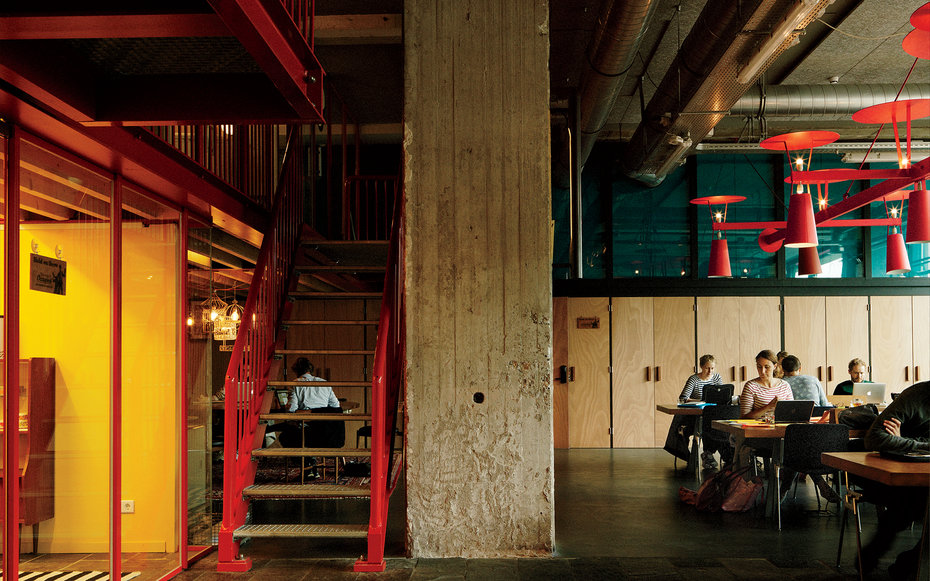
Environmental sustainability and alternative practices of urban development are also what inspire the architect Wouter Valkenier of Studio Valkenier. I met him at De Ceuvel, a café and multiuse hangout space hidden away in the middle of a group of small industrial garages by a once-polluted canal. It was there that I saw for the first time rescued house-boats, freshly painted in shades of gray and white, raised on platforms and connected by a winding boardwalk that was semi-obscured by clusters of plants—wild grasses, flowering weeds, and young poplars (all soil-cleaning, naturally). Peering through a large window of one, I spied a bearded blond man laughing convivially with two women, the glow of Apple desktop computers illuminating their faces. It was the grooviest office ever. Almost all of the most interesting projects here are designed to make something new and utopian from the old.
"The city is starting to understand how important these underground, bottom-up types of projects are," Valkenier told me. We were sitting inside De Ceuvel drinking homemade lemonade and eating salads made from ingredients sourced from the kitchen's own gardens. Valkenier was currently working on a major project in Sloterdijk, in the north-western corner of the city, near the harbor. According to him, that area will be the next Wild West for the creative crowd.
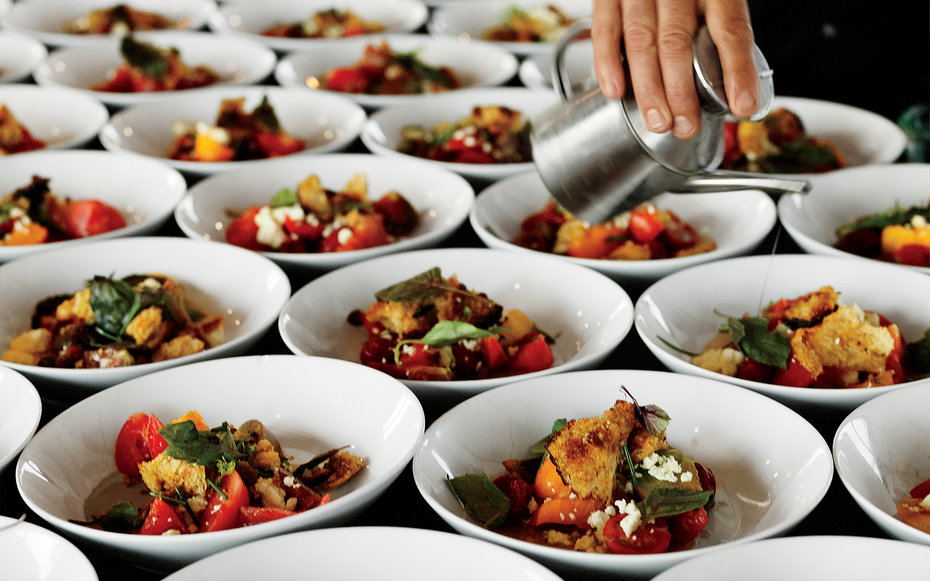
Until then, another focal point of the city's energy is Amsterdam-Oost. The district includes Dapperbuurt (home to the popular Dappermarkt, an outdoor market selling cheap and exotic items from underwear to spices) and Indische Buurt, a neighborhood that was built at the turn of the 19th century to house working-class families. Many of the streets—Javastraat, Sumatrastraat, Borneostraat—are named after former Dutch colonies. Now much of the area is populated by young students and families who hail from Turkey, Morocco, and Suriname. They hang out at Maxwell Café, an all-day coffeehouse kind of place in the Oosterpark neighborhood.
It's thanks to the café's owner, a young restaurateur of Moroccan descent named Riad Farhat, that the area has generated so much buzz. A feisty sommelier named Mees List who lives nearby told me it's almost impossible to walk into a local bar that isn't owned by Farhat and his two partners, who have adopted the collective moniker Three Wise Men from the East.
The trio's most dramatic project is located on the backside of a large parking garage on the Singelgracht. Not long ago it was a dark, unwelcoming corner where drug addicts shot up. Farhat reinvented it as a bar and restaurant called Waterkant that has outdoor seating, an indoor café with cheerfully clashing Caribbean colors, and a menu that celebrates Surinamese cuisine. He told me they sell thousands of bottles of Parbo, a popular Surinamese beer, a day.
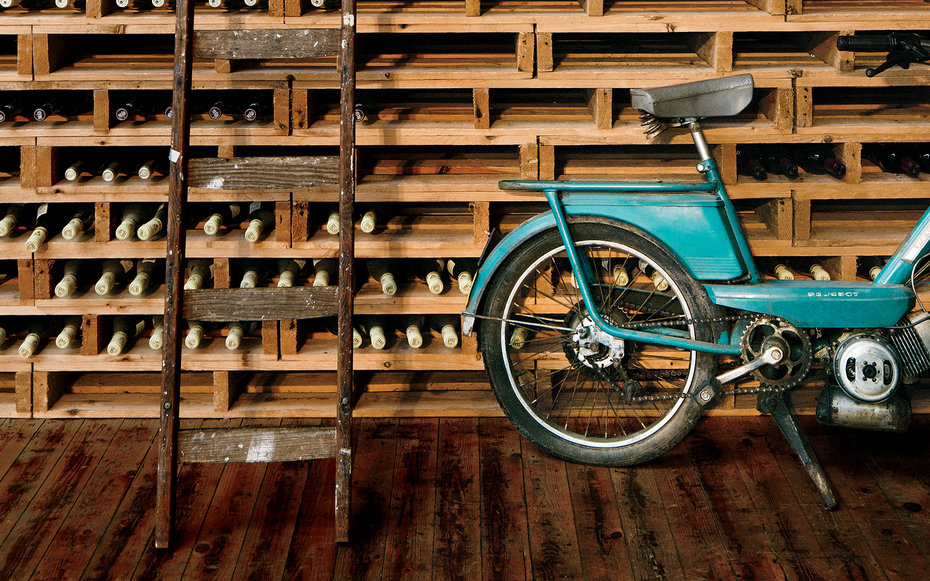
Nothing is farther from the center than Vuurtoreneiland, a lonely little windswept isle about an hour from the canal ring. Officially part of Amsterdam-Noord, this ship-size fragment of land feels like a remote, floating wilderness. Now it serves as a dramatic stage for one of the city's most talked-about restaurants, which is named after the island. "We sell out almost all our tables for the entire summer in a day," said Brian Boswijk, a cofounder with the chef Sander Overeinder. Boswijk has been involved in some of Amsterdam's most celebrated alternative restaurants, from the roving supper club Interdit to the pop-up restaurant 11.
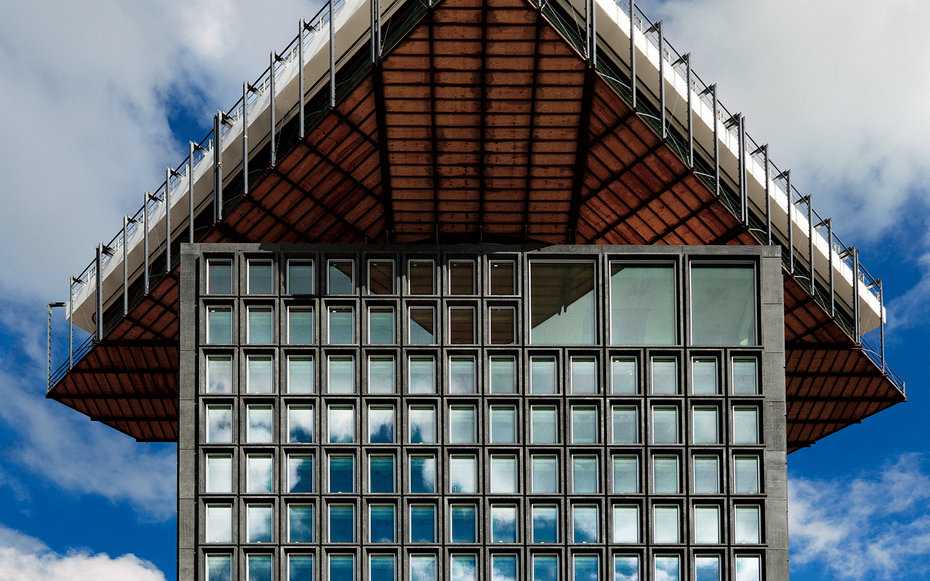
On a perfect June day, I waited to be picked up by Yveer XIII, the 1927 wood ferryboat the restaurant uses to transport diners to and from the is- land. It was a delightful voyage. I could see a field of grass dotted with sheep. A pair of falcons drifted over the lighthouse. Upon disembarking, the dinner guests were led along a path to an open-sided structure, angular and Nordic-looking, made of wood and glass. This was where we were to dine. Five nights a week, when the weather is good, Overeinder delivers a four-course menu; ingredients for some of the dishes are foraged or grown on the island, then prepared over an open fire. That night, Boswijk told me that he never expected such immediate success with this culinary venture but has an inkling as to why Vuurtoreneiland is so popular: "It's not just a meal but a small journey. You feel the wind and hear the birds."